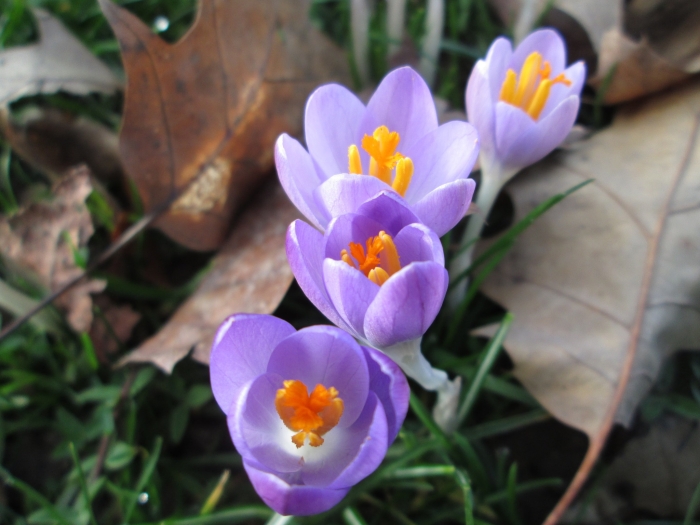Woodland Crocus
(Crocus tommasinianus)
Woodland Crocus (Crocus tommasinianus)
/
/

Andreas Rockstein
CC BY-SA 4.0
Image By:
Andreas Rockstein
Recorded By:
Copyright:
CC BY-SA 4.0
Copyright Notice:
Photo by: Andreas Rockstein | License Type: CC BY-SA 4.0 | License URL: http://creativecommons.org/licenses/by-sa/4.0/ | Rights Holder: Andreas Rockstein | Publisher: iNaturalist | Date Created: 2018-01-30T15:02:36-08:00 |

















































Estimated Native Range
Summary
Crocus tommasinianus, commonly known as Woodland Crocus, is a deciduous perennial herb native to a range of habitats including deciduous woodlands and grassy meadows in Southeastern Europe, particularly the Balkans. It typically grows to 3-4 inches (7-10 cm) tall and 2-3 inches (5-8 cm) wide. The species is known for its slender, cup-shaped flowers that are about 2–4 cm (1–2 in) long. The flowers have six petals that range in color from pale silvery lilac to reddish-purple, often with silver overlay and darker tips, and white perianth tubes. The flowers are considered quite showy and emerge in January and February before the narrow, grass-like leaves are fully developed. The plant produces no notable fruit or berries but is valued for its early spring blooms.
Woodland Crocus is appreciated for its ability to naturalize, forming large, colorful drifts in gardens and parks. It has been awarded the Royal Horticultural Society’s Award of Garden Merit for its ornamental value. It is commonly used in rock gardens, borders, and as a ground cover, particularly effective when planted en masse. This crocus prefers full sun to part shade and requires well-drained soil with medium moisture. It is relatively low maintenance but can be susceptible to corm rot if planted in overly wet conditions. It is also deer-resistant, making it a suitable choice for areas with wildlife pressure.CC BY-SA 4.0
Woodland Crocus is appreciated for its ability to naturalize, forming large, colorful drifts in gardens and parks. It has been awarded the Royal Horticultural Society’s Award of Garden Merit for its ornamental value. It is commonly used in rock gardens, borders, and as a ground cover, particularly effective when planted en masse. This crocus prefers full sun to part shade and requires well-drained soil with medium moisture. It is relatively low maintenance but can be susceptible to corm rot if planted in overly wet conditions. It is also deer-resistant, making it a suitable choice for areas with wildlife pressure.CC BY-SA 4.0
Plant Description
- Plant Type: Herb
- Height: 0.3-0.5 feet
- Width: 0.3-0.5 feet
- Growth Rate: Moderate
- Flower Color: Purple, White
- Flowering Season: Spring, Winter
- Leaf Retention: Deciduous
Growth Requirements
- Sun: Full Sun, Part Shade
- Water: Medium
- Drainage: Medium
Common Uses
Bee Garden, Butterfly Garden, Deer Resistant, Groundcover, Low Maintenance, Potted Plant, Rabbit Resistant, Rock Garden, Showy Flowers, Street Planting
Natural Habitat
Deciduous woodlands and grassy meadows in Southeastern Europe
Other Names
Common Names: Tommasini’s Crocus, Early Crocus, Sne-Krokus, Dalmatiner Krokus, Tommasini-Krokus, Crocus De Tommasini, Snøkrokus, Boerenkrokus, Snökrokus, Crócus
Scientific Names: , Crocus tommasinianus, Crocus vernus var. tommasinianus, Crocus serbicus, Crocus tommasinianus f. jeremicii,
GBIF Accepted Name: Crocus tommasinianus Herb.